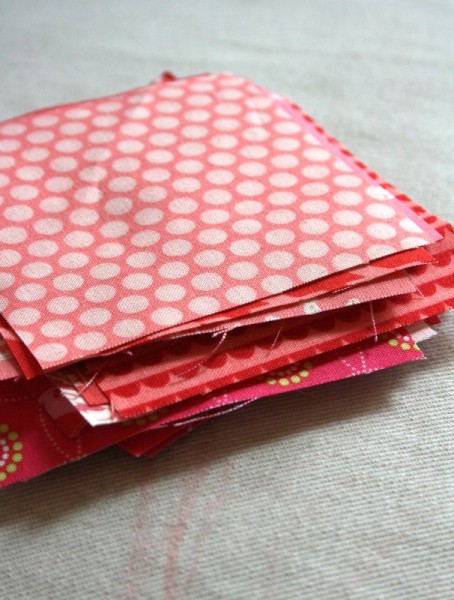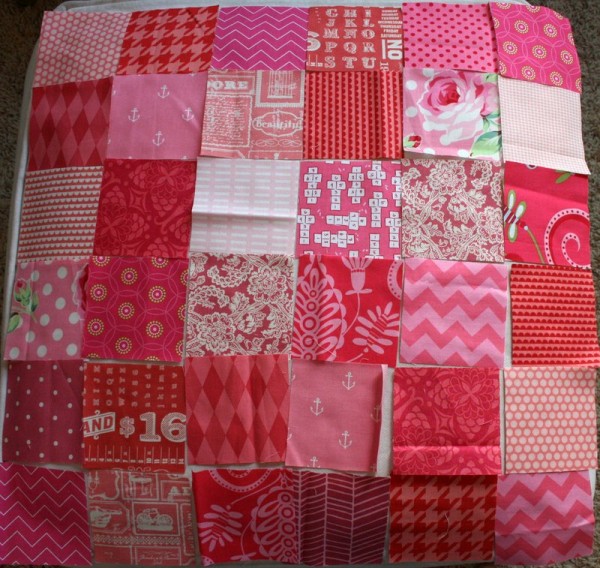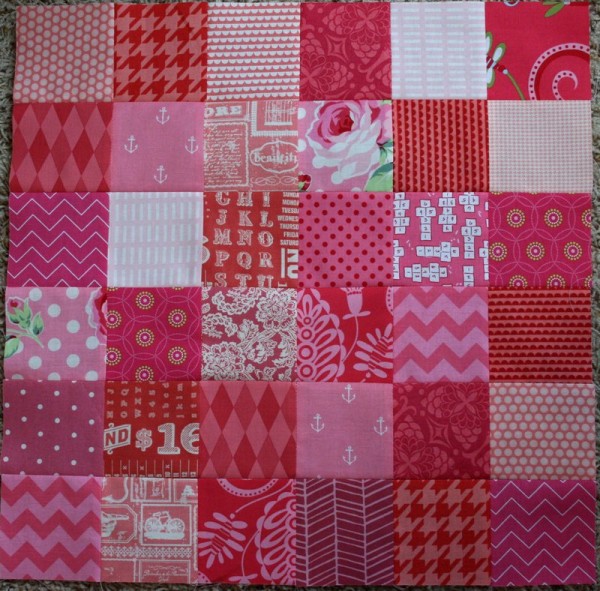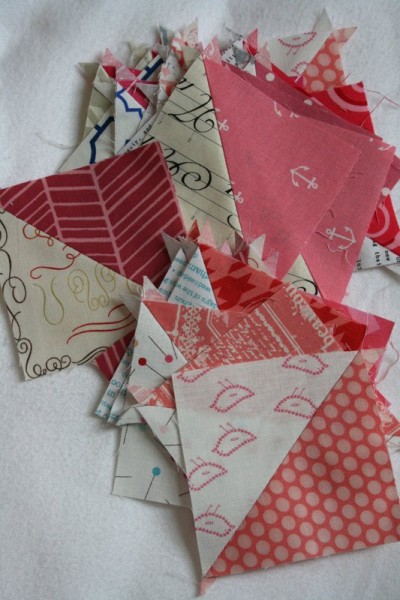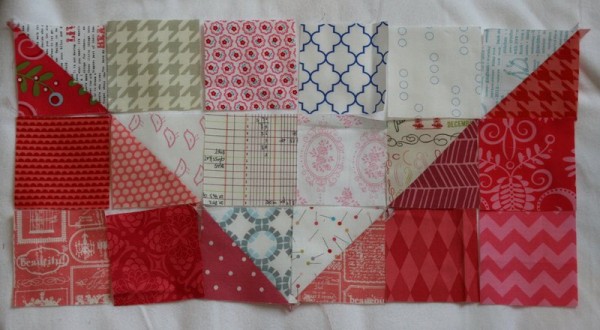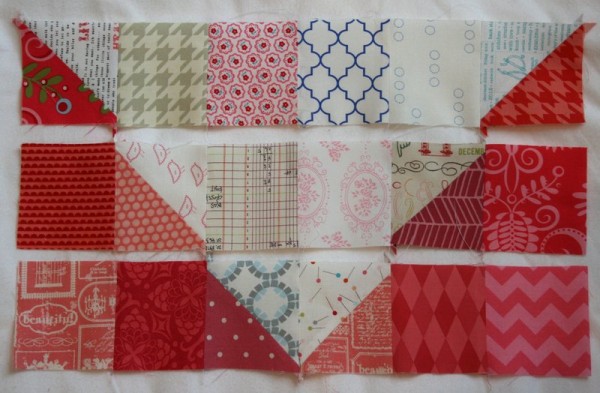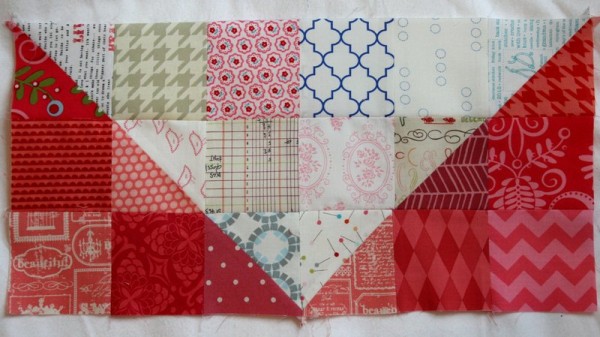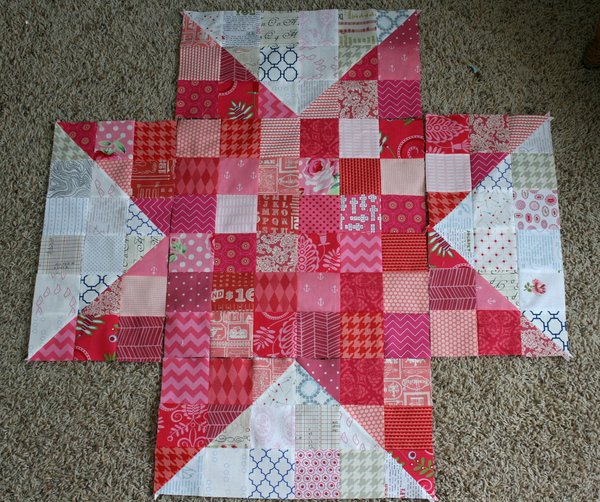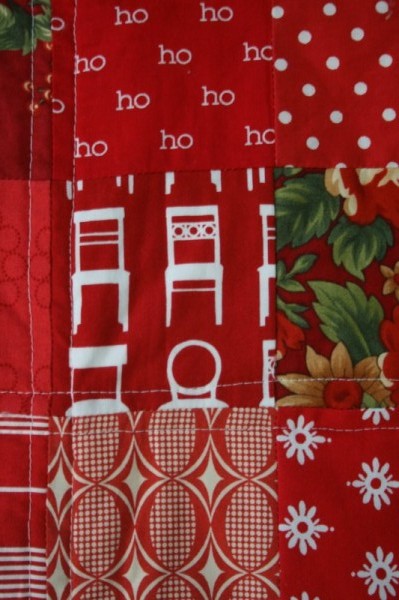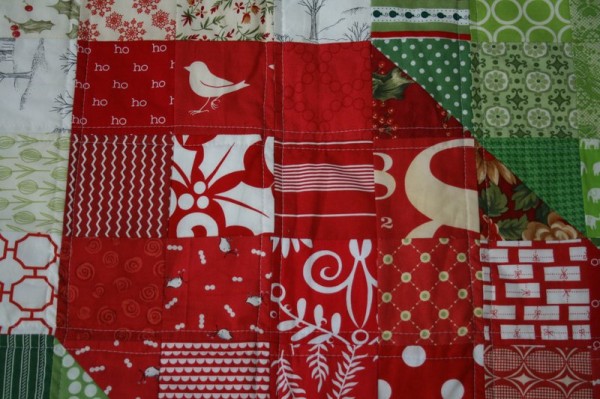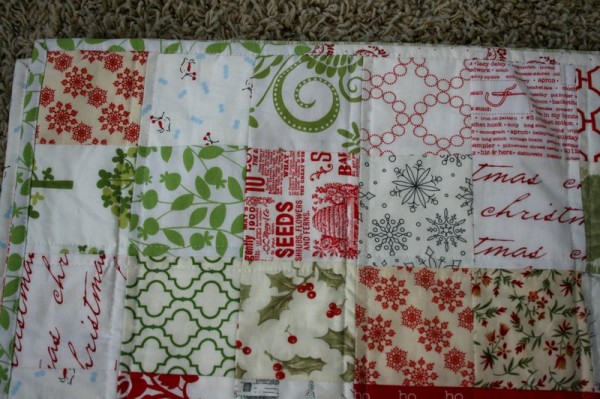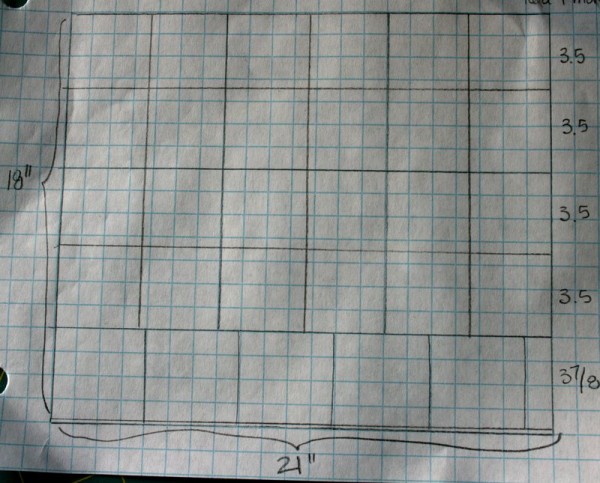Scrappy Swoon-along: Blocks 3 & 4
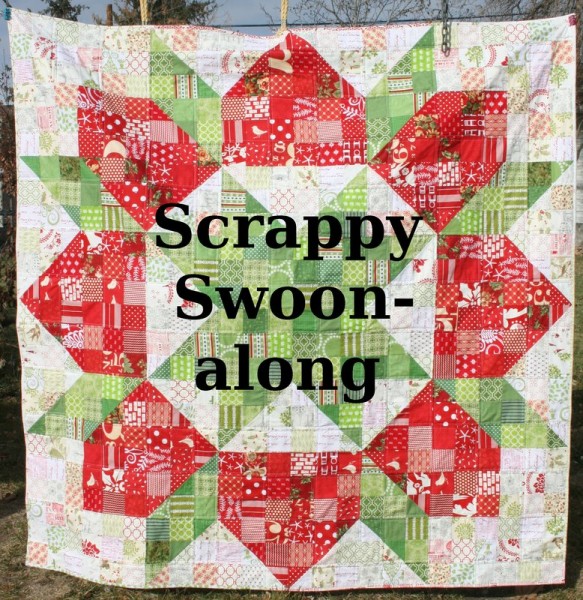
Welcome back! I hope your center star is taking shape and that you’re excited to see the quilt top grow. Let’s get started on sections 3 and 4!
Section 3 In this section we introduce your secondary color. For section three you’ll need 6 – 3 7/8 inch squares of both your secondary color AND your background color, and 12 – 3.5 inch squares of both your secondary color and your background color.
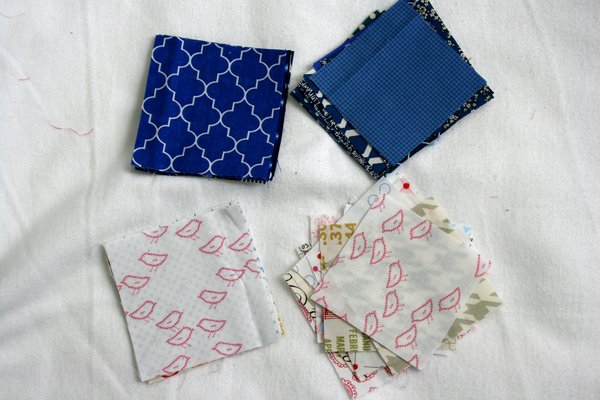
Take the 3 7/8 inch squares and pair each background square with a secondary color square. Make 12 half square triangle blocks using these squares.
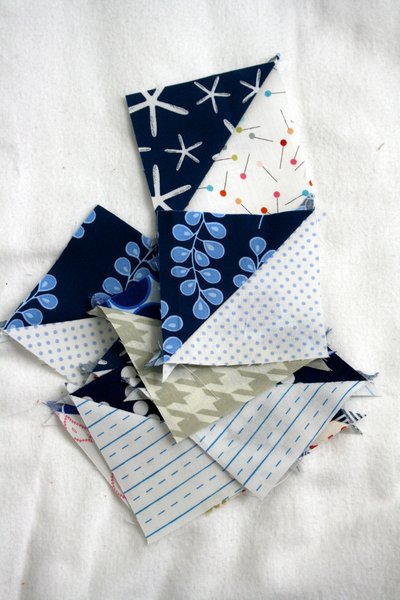
For each section 3 block you’ll use 3 half square triangle squares, three background squares, and three secondary color squares. Lay them out in three rows of three as shown below:
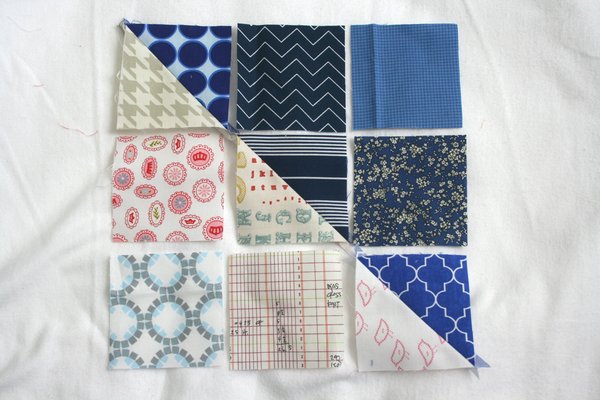
Sew the squares into three rows:
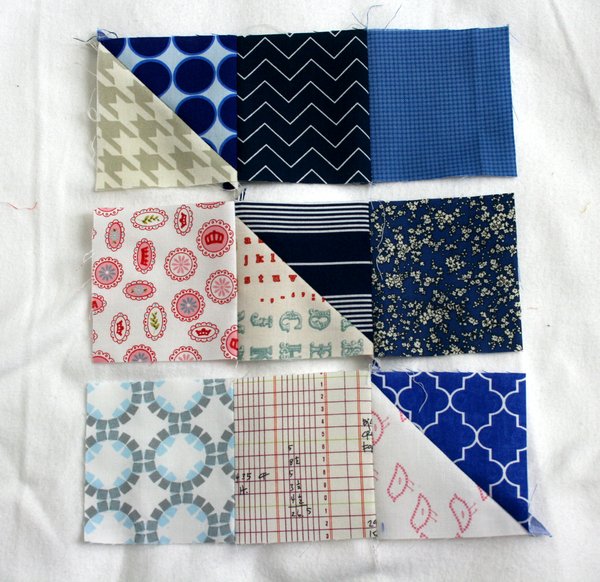
Finally, sew the three rows together to make a square. The block should measure 9.5 inches square.
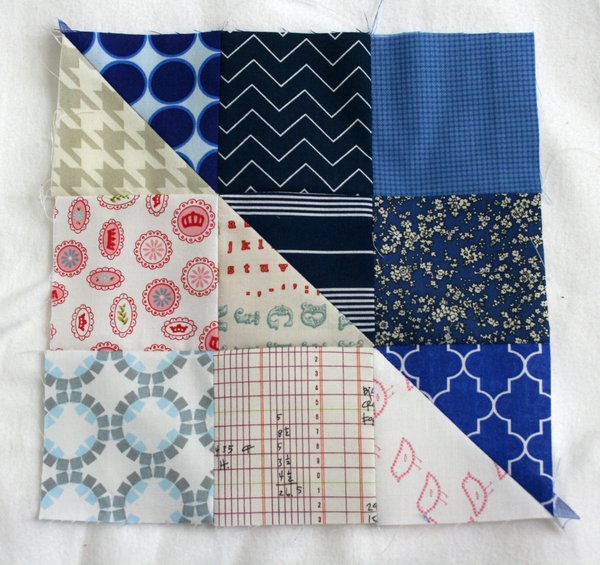
Make 4 of these blocks.
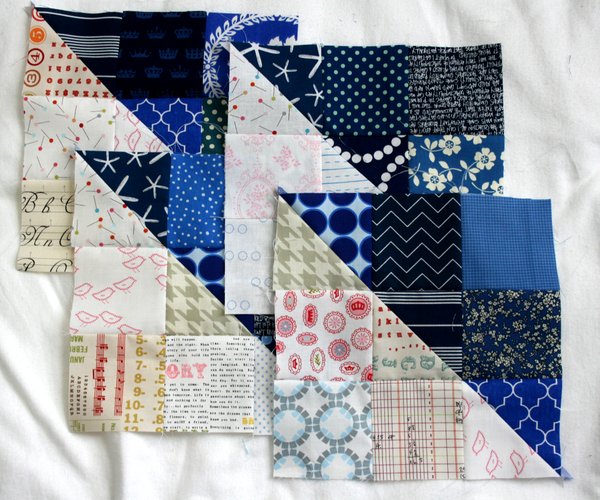
These blocks will form the corner squares in the center of the quilt, like so:
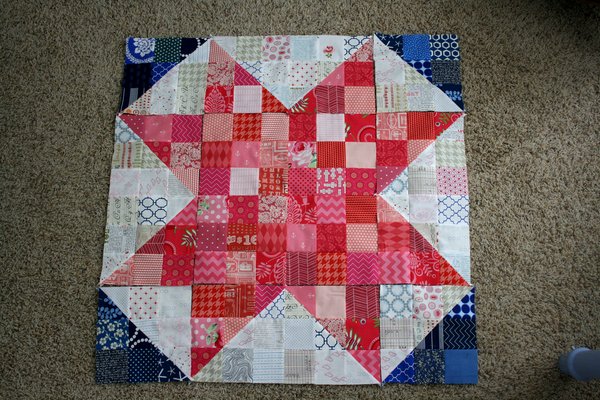
It’s so pretty! Don’t you love all those scraps? Now for the next section…
Section 4 In this block you’ll be using both your primary and secondary colors. Choose 12 – 3 7/8 inch squares of both colors, and 24 – 3.5 inch squares of both primary and secondary colors.
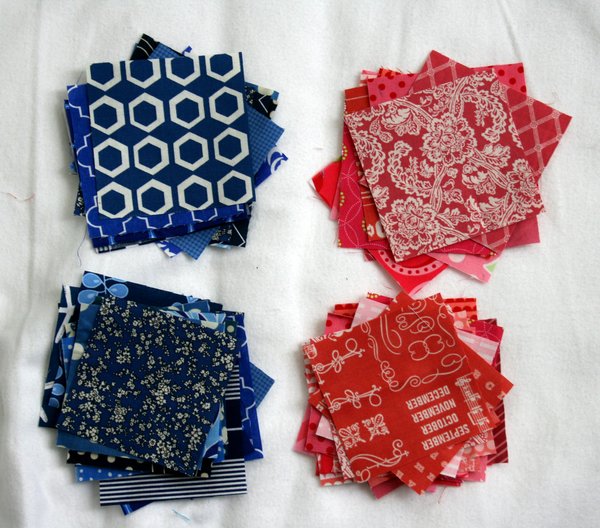
Again, pair up the 3 7/8 inch squares to make 24 half square triangles.
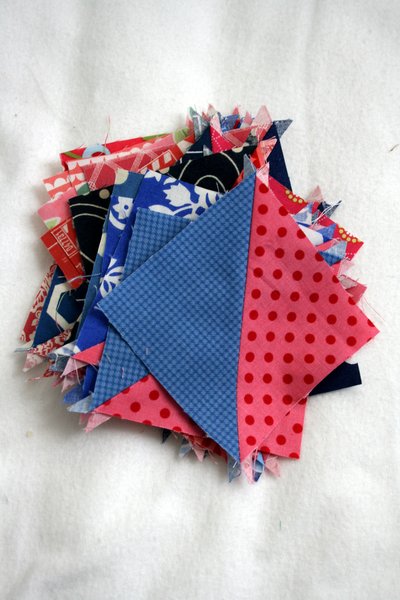
To make one block, you’ll use 3 half square triangles, 3 – 3.5 inch squares of primary color and 3 – 3.5 inch squares of your secondary color. Lay them out like so:
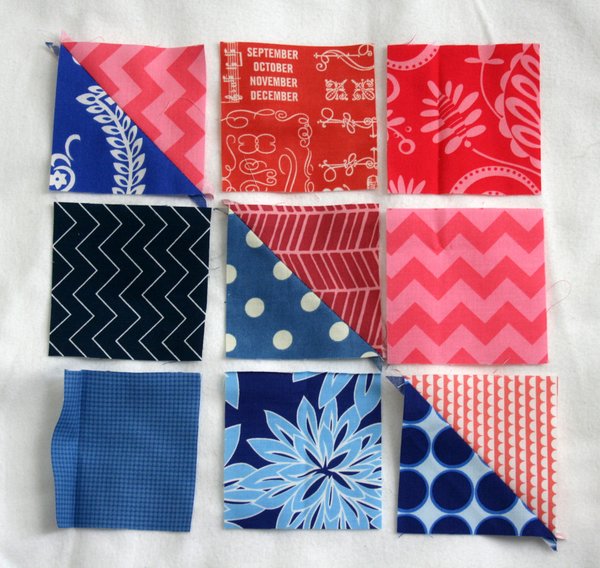
Sew the squares into rows:
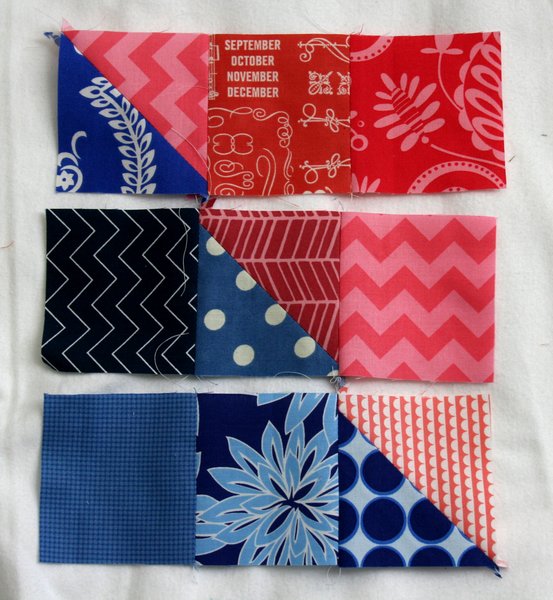
and the rows into a 9.5 inch square block:
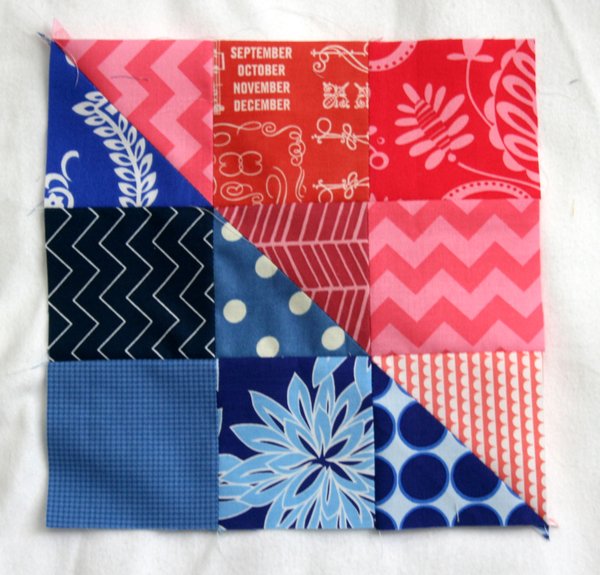
Make eight of these blocks.
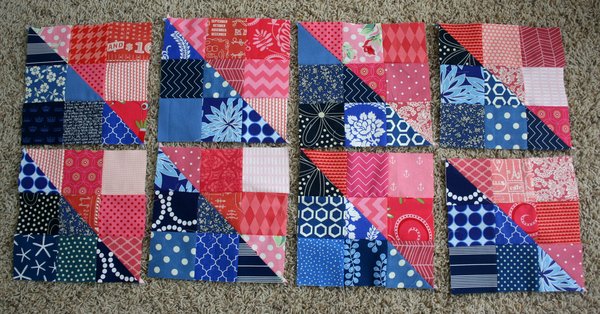
Now, making eight of these can be a bit tedious even though the block itself is incredibly simple. I adopted a little method that allows me to quickly lay out all my blocks at once, keep the squares organized, and be able to walk away easily without a mess to return to. In my house full of children, that’s important! Here’s how I make them:
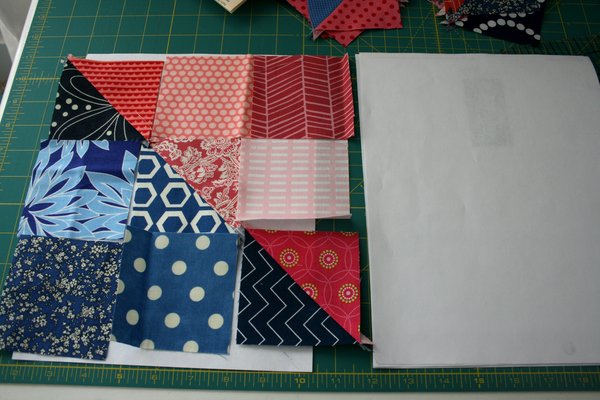
Get 9 pieces of paper. On one sheet of paper, lay out the squares for a single block. Then place a sheet of paper on top of that and lay out another block. Do this eight times.
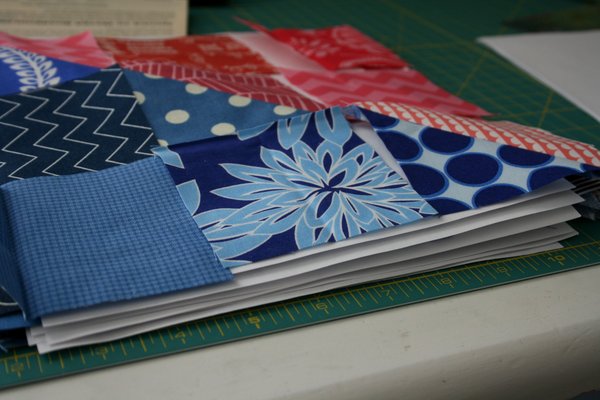
Because sewing is often something I come back to for ten minutes here and there, I keep a 9th piece of paper on top to make sure the squares will stay put (and to deter my three year old from scattering them).
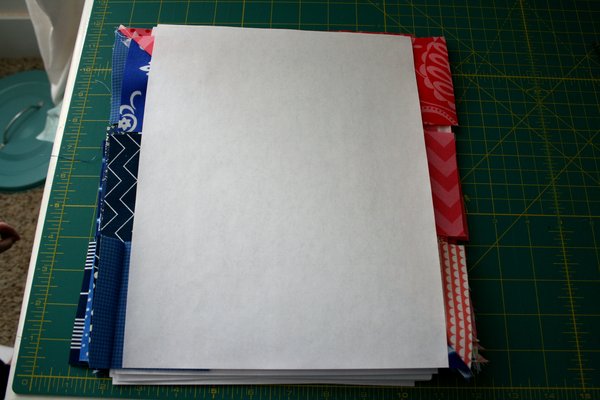
When it’s time to sew the rows together, I put the top paper next to my stack and start transferring the blocks, one row at a time, to the other paper.
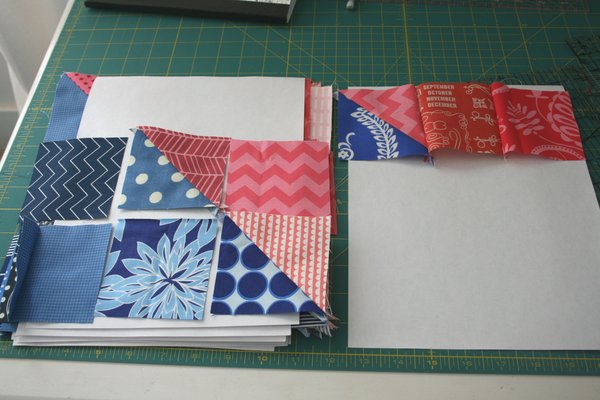
Once I’ve pieced three rows, I have another piece of paper ready to put on top of my rows so I can begin the next block. I continue to do this until I’ve worked my way through the stack, and then I carry the stack to the ironing board and do it again. This method lets me sew all the rows at once, iron all at once, then sew the rows together and before I know it, I’m on the last block and it seemed to happen so fast!

When the blocks are all pieced together I iron them and, to save workspace in my sewing room, I use clothing hangers to store the blocks.
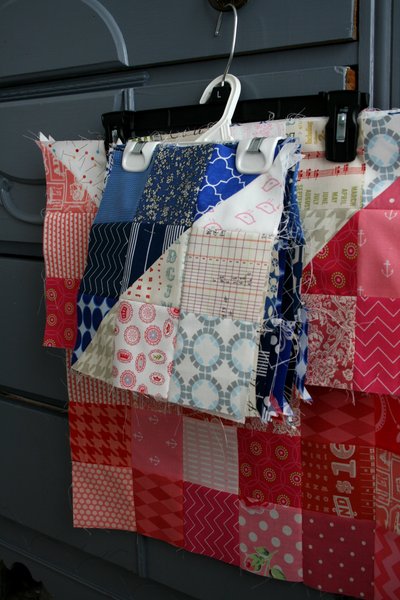
I do this with all the quilt along or block of the month blocks I’m working on. It keeps them nice and flat and easy to get to. I have a different hanger for each quilt hanging in the closet, and I find that seeing them like that keeps me motivated to work on the project. These are probably very simple tips that you already use, but I find them helpful, especially when I’m making eight of the same thing!
Now, with sections 3 and 4 pieced, this is what the quilt top looks like so far:

I love it! Please share your progress in our flikr group , (I LOVE all the great colors and fabrics you’ve shared already in your first two sections!) and we’ll meet back here next Monday for sections 5 & 6.
Happy sewing, Jennifer To go directly to the next post in this quilt along, click here.

